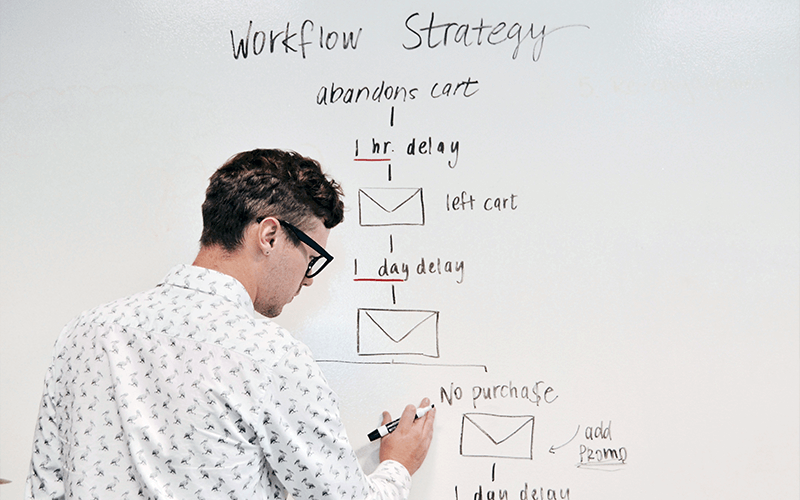Email list building refers to the process of collecting email addresses from website visitors or customers, using email marketing software. This enables businesses to grow their subscriber database, paving the way for potent business communications with both prospective and existing clients.
Nearly 6 out of every 10 email subscribers are persuaded by email marketing to make a purchase decision. At least once per month, 50.7% buy something from a marketing email. Meanwhile, 23.8% of people make a purchase via marketing emails several times per month and 3% do it more than once per week!
Email lists are business assets—they are a component of owned media, channels over which your company has complete control. They are resistant to unexpected algorithm changes and give you the ability to modify your brand storytelling. They are indispensable since they have a greater reach and are less expensive than paid media.
Even in worst-case marketing scenarios, such as being dropped from Google’s SERP rankings, or a social platform’s algorithm favoring organic posts, an email list remains untouched, a resilient marketing tool in your arsenal.

Let’s take a deep dive into How to Build a High-Quality Email List in 2023.
What is a High-Quality Email List?
A high-quality email list is a collection of email addresses from individuals who have explicitly opted in to receive communications from your business. But the quality of an email list isn’t just about the sheer number of addresses. There are several key factors that define a high-quality email list.
So which subscribers are considered “High-Quality,” you ask?
- Opt-in Subscribers: The individuals on your list who have knowingly and willingly provided their email addresses. They have an interest in your business or the content you provide, making them more likely to engage with your emails.
- Engagement: The subscribers who open, read, and engage with your emails regularly. They click on links, make purchases, or take other actions that you’ve identified as valuable.
- Segmentation: based on various criteria such as demographics, buying behavior, or email engagement levels. A high-quality list is organized and categorized, enabling personalized and targeted communication.
- Accuracy and Currency: verify email addresses to ensure they’re up-to-date and belong to active users. A high-quality list is regularly cleaned and updated to remove bounced, inactive, or unengaged addresses.
- Relevance: they are part of your target audience, meaning they fit the profile of your ideal customer. They have a genuine interest in or need for your products or services.
- Low Unsubscribe or Spam Rates: A high-quality email list will have minimal unsubscribe rates or spam reports. This indicates that the content is relevant to the subscribers and they are interested in receiving your emails.
So, a high-quality email list is a dynamic, engaging community of interested and active consumers who are excited to hear from your business.
READ: Top 4 Ideas to Master Email Marketing on a Limited Budget
Reasons You Need to Know How to Build a High-Quality Email List
Knowing how to build a high-quality email list is an invaluable skill for any business. Here are the key reasons why:
- Improved Customer Engagement: A high-quality email list means you’re reaching out to individuals who are genuinely interested in your product or service. They’re more likely to open your emails, read your content, and engage with your brand.
- Higher Conversion Rates: With targeted, personalized messages, you can directly address your audience’s needs and interests, leading to higher conversion rates. This could be in the form of sales, sign-ups, downloads, or any action you want your audience to take.
- Cost-Effective Marketing: Email marketing provides one of the highest returns on investment among digital marketing strategies. You’re basically maximizing this potential ROI, as you’re reaching out to those most likely to convert.
- Customer Retention: Regular, personalized communication with your customers helps foster brand loyalty and enhances customer retention.
- Better Analytics and Insights: A high-quality email list allows you to track engagement and conversion metrics more accurately. Understanding how your audience interacts with your content can provide valuable insights, allowing you to continually optimize your strategy.
- Control Over Your Audience: Unlike social media platforms where you’re subject to ever-changing algorithms, with an email list, you have direct access to your audience. It’s a reliable channel that isn’t affected by third-party changes.
- Promote New Products or Services: A high-quality email list is an excellent communication channel for launching new products or services. Because your audience is already interested in your brand, they’re more likely to be interested in your new offerings.
- Building Trust and Relationships: Regular, value-packed communication with your audience helps build trust and establish a strong relationship. This can lead to not only repeat business but also referrals as your subscribers recommend you to their network.
In essence, knowing how to build a high-quality email list enables more effective marketing, leading to stronger customer relationships, increased conversions, and business growth.
Step-by-step Instructions to Build a High-Quality Email List
1. Understand Your Target Audience
Before you start building your list, define who your ideal subscribers are. What are their interests? What problems can your product or service solve for them? This understanding will help you create targeted, effective email campaigns.
Nike, a global sportswear company, employs a strategic approach to target audience identification and engagement. The company segments its audience into three key demographics: men, women, and children. It also effectively targets millennials and Gen Z, recognizing these cohorts’ preferences for brands that appear diverse and trustworthy.

Nike generates customer personas, such as the “Weekend Runner,” who is likely to track their running habits and progress using the Nike Run Club app.
If you know the people, you can follow their changing interests over time.
But how do you know who these people are supposed to be?
- Understand Your Product. First and foremost, you must have a clear understanding of what your product or service is, what problem it solves, and its unique selling proposition (USP).
- Analyze Existing Customers. Look at the people who are already buying your product or service. Also, consider conducting interviews with your consumers or giving them questionnaires to obtain a better understanding of their preferences and behaviors.
- Check Out the Competition. Look at who your competitors are targeting. While you shouldn’t copy their strategy, this can give you an idea of potential markets you might have missed. (Additionally, understanding their strategy may enable you to position your product differently to reach untapped segments).
- Define Customer Personas. Create detailed customer personas to represent your ideal customers.
Leverage Analytics. Use analytical tools like Google Analytics or social media insights to gain a better understanding of the demographics and behaviors of your website visitors and social media followers. - Conduct Market Research. Surveys, focus groups, and one-on-one interviews can provide in-depth insights into your potential audience.
- Understand who your customers are not. This process, often referred to as negative or exclusionary persona development, involves identifying the characteristics of people who are not a good fit for your product or service.
2. Create Engaging Content
Whether your business is in the food industry, weird products like ice cream that doesn’t melt, or anything in between, the content you create must appeal to your audience.
Research indicates that engaging content boosts your business performance by attracting more frequent visitors, increasing their loyalty, encouraging content sharing, and promoting conversions.
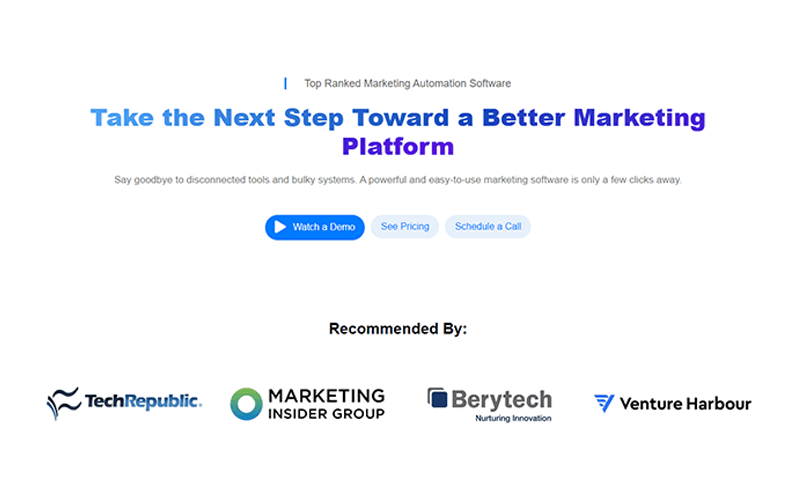
For example on our homepage, you’ll find interactive features for intuitive navigation. This includes a button for viewing a demonstration and a section showcasing recommendations, enhancing credibility and trust.
Creating engaging content is paramount for any business, no matter the industry, as it has a direct impact on growth. Whether your business is in the news industry, selling quirky products like a pillow to make your cat purr less, or anything in between, the content you create must appeal to your audience.
If your content fails to engage readers, they won’t consume or retain the information, resulting in a waste of your time, money, and resources. Crafting great content may not be easy, but it’s worth the effort. Engaging content is about achieving results, which can be measured through increased traffic, clicks, opt-ins, conversions, sales, comments, likes, or mentions.
Your content needs to be compelling enough to convince visitors to share their email addresses. This could be informative blog posts, webinars, eBooks, or industry reports—anything that provides value to your audience.
Here are some tips to write more engaging content:
- Optimize Posting Times: Understand your audience’s habits and preferences to determine the best time to post. Predictive sending is an excellent way to optimize when your marketing emails are sent based on historical campaign data.
- Visuals, Structured Lists, and Layouts: Make your content visually appealing and easy to digest. And incorporate video into your email marketing campaigns.
Break up text and highlight key points. - Prioritize Originality: Stand out from the crowd by offering unique perspectives or insights. This not only boosts your brand’s credibility but also makes your content more memorable and share-worthy.
- Keep It Concise Yet Comprehensive: Create content that is to the point but still provides value. Avoid unnecessary fluff, but ensure you’re still covering the topic thoroughly.
- Ensure Information Accuracy: Maintain your brand’s credibility by providing accurate, up-to-date information. Fact-check your content and cite reliable sources.
- Incorporate Storytelling: Humans are wired to connect with stories. Use narratives to make your content more engaging and relatable.
- Engage with Polls and Contests: Encourage audience participation by running polls or contests. In order to include a poll in your email campaigns, you can either use the basic ESP functionality or use a more comprehensive solution provided by platforms such as MailChimp, MailerLite or Servacit.
3. Offer an Incentive for Subscribing
Encourage sign-ups by offering a reward for subscribing. This could be a discount code, free shipping, an exclusive eBook, or access to exclusive content. The goal is to provide immediate value in exchange for their email address.
For example here is a strategy GAP uses, offering 25% off for signing up!
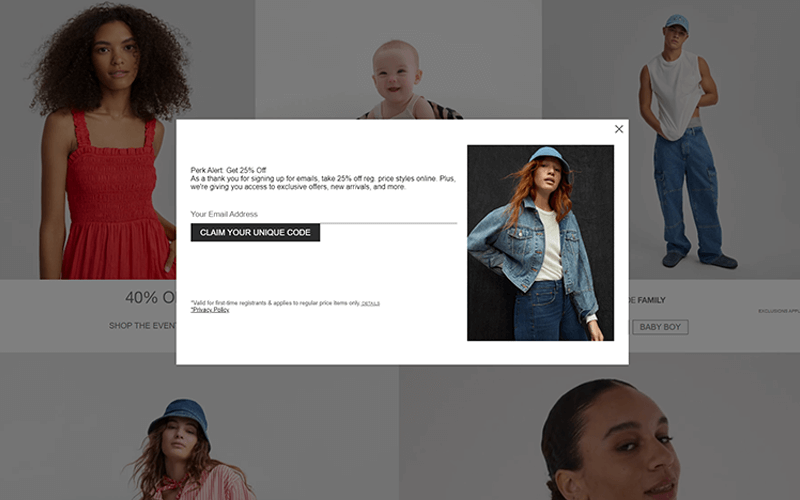
And here is one from Starbucks, offering free coffee for joining.
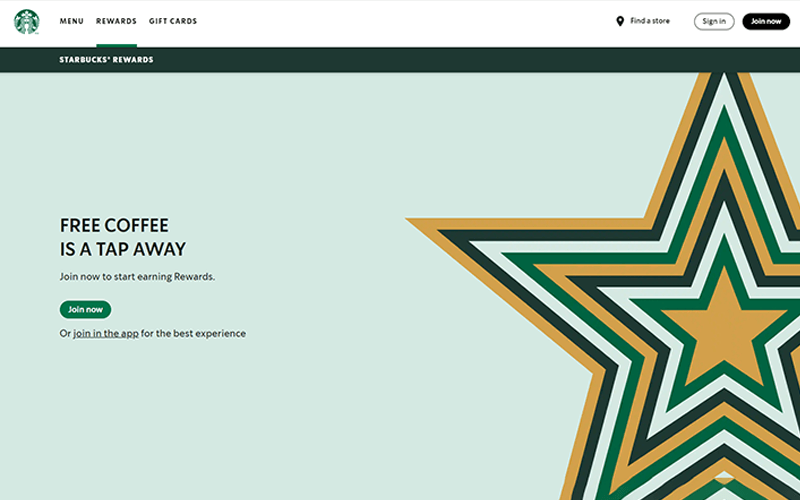
4. Make Sign-Up Forms Easily Accessible
Your sign-up forms should be easy to find on your website. Consider placing them on your homepage, at the end of blog posts, in your website’s footer, or even as a pop-up.
To ensuring privacy compliance, visitors to your website should be asked to confirm their consent to your Terms & Conditions as well as your privacy policy before submitting any form. This includes providing their email address and agreeing to what types of emails they may receive from you.

5. Leverage Social Media Platforms
Use your social media platforms to promote your email list. You could share a link to your sign-up form, highlight the benefits of joining your list, or use paid ads to reach a larger audience.
Leveraging the immense potential of social media platforms can turbocharge your email marketing strategies.
Social media is comparable to a thriving global marketplace where billions of people converge every day. The estimated number of social media users in 2023 is around 4.76 to 4.89 billion worldwide. Imagine the likelihood that even a small portion of this vast number ends up on your email list; it’s an opportunity to see your growth curve go vertical.
But the charm of social media platforms like Instagram, Facebook, Pinterest, and TikTok is not just their user base; it’s their ability to help you form a direct, personal connection with your audience. If you know your audience’s favorite hangouts and tailor your strategy to these platforms, you’re going to see a surge in your email list sign-ups.
With short form video content on social media grabbing the attention of billions, this delivery format is changing the marketing game. Businesses can include a call to action within their short form content to improve direct response metrics such as clicks and sign ups.
And while social media is a potent tool, it’s also somewhat unpredictable. Platforms can suspend or delete your account anytime without warning. That’s why it’s a smart move to convert your social followers into email subscribers. It’s like an insurance policy that safeguards your connection with your audience, keeping potential leads safe and sound.
6. Using Automation to Grow Your List
Automation in email marketing is a strategic process that stitches together a sequence of personalized emails, which are triggered by the actions of your subscribers. This way, the right message lands in the right inbox at the right time, without your constant intervention.
Why does this matter? Because email marketing isn’t just a broadcast or an email blast—it’s a finely tailored suit that fits each recipient perfectly. It’s personal, relevant, and timely, making it more effective than its one-size-fits-all counterparts.
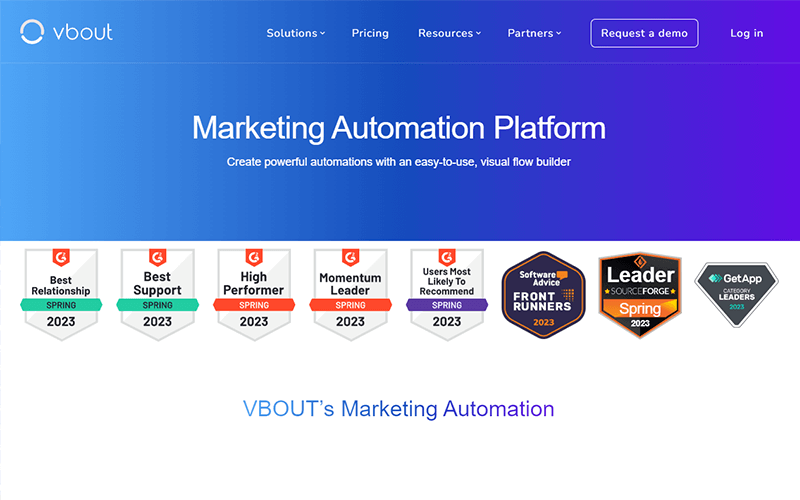
Email marketing automation has leveled the playing field, making it accessible to businesses of all sizes. No longer a luxury of large corporations, affordable cloud-based solutions have entered the market, extending their feature-rich offerings to small and medium-sized businesses.
The market is brimming with email marketing automation tools, each promising to take your campaigns to new heights. These tools are your power-ups, making your marketing more effective while saving you time. They elevate open rates and segment your audience so your customers receive content they truly care about. Take a look at our Email Automation Templates.
Email marketing automation tools can help you send timely, personalized emails to your subscribers, increasing engagement and making your email marketing efforts more efficient.
READ: Advantages of Email Marketing
Here are some of the best email marketing automation tools:
- VBOUT. Roll out cross-channel automation by connecting your messages, lead engagement tracking, landing pages, and 3rd party apps. Use VBOUT’s ready-made automation templates built by marketing experts to quickly create workflows.
- MailChimp. A comprehensive email marketing platform that offers user-friendly design tools, campaign analytics, automated emailing, and advanced segmentation. It’s perfect for businesses seeking an all-in-one solution for their email marketing needs.
- HubSpot. HubSpot’s email marketing module offers customizable email templates, A/B testing, and advanced analytics.
- MailerLite. A lightweight, budget-friendly email marketing tool that is ideal for small businesses or startups. It provides features like a drag-and-drop email builder, landing pages, automation, and basic analytics.
- Brevo. Brevo is a marketing automation platform that offers tools for email marketing, CRM integration, and campaign management, across multiple channels.
- Omnisend. Focuses on advanced automation workflows and provides features for capturing and converting new leads, reducing cart abandonment, and creating personalized email experiences.
- ActiveCampaign. An integrated email marketing, marketing automation, and small business CRM. It offers a suite of tools designed to help businesses acquire, retain, and engage customers.
- ConstantContact. Provides a range of intuitive marketing applications designed to help small businesses and nonprofits expand their customer bases and nurture relationships.
- Drip. An e-commerce marketing engine that uses rich customer data to create personalized marketing experiences.
7. Using Pop-Ups and Top Bars
Despite their reputation, pop-ups and top bars can be effective in growing your email list when used wisely. Make sure they’re not overly intrusive and offer real value.
The placement of the popup also needs to be considered. It should be in the center/ top of the page as the user should be able to see it clearly and also it should be responsive to mobile devices.
When using pop-ups the timing of when they appear is crucial. There are several triggers that can be used for displaying a pop-up such as upon page entry, after a few seconds of the user entering the page, when the user has scrolled down the page or even when the cursor is moving towards closing the page.
A pop-up can be configured to prompt the user with different information or call to actions based on the page content and the pop-up trigger.
The color combination should be pleasing and call to action buttons should be prominent and attractive. It is recommended to use a clear call-to-action button and make sure the language is concise and inviting. You can also use a countdown timer to create a sense of urgency.
It is important to test different variants of pop-ups and top bars to see which one performs better.
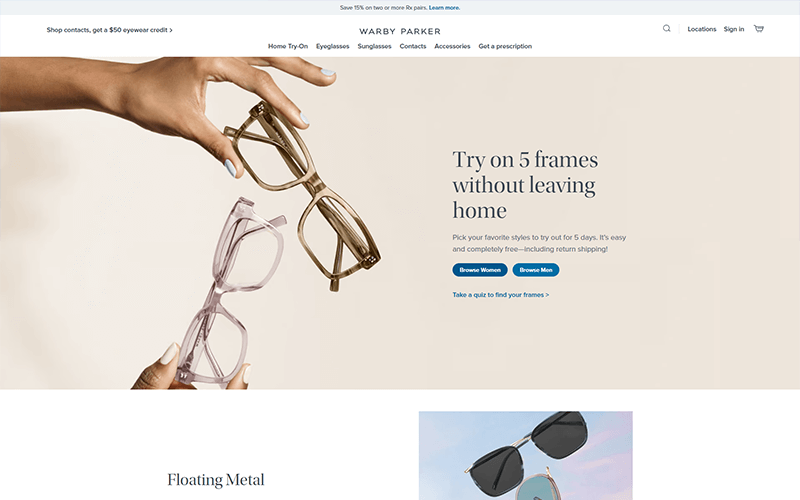
8. Utilizing A/B Testing
A/B testing can help you understand what type of content, design, and incentives work best for your audience. Test different elements of your emails and sign-up forms to optimize your list-building efforts.
A/B testing is a simple yet effective strategy that involves sending two variants of your email campaign to different subsets of your subscribers. The goal? To identify which version resonates more with your audience. This can range from testing something as straightforward as subject lines to comparing completely different email templates.
Let’s say you’ve just crafted an impressive email campaign, but you’re torn between two subject lines. With A/B testing, you can send one subject line to a part of your audience and the other to another part, then see which one garners more opens. Similarly, you can compare different email designs or layouts to identify which one prompts more clicks.
A/B testing removes the guesswork from your email marketing decisions, replacing assumptions with evidence-based conclusions. This means you’re not relying on intuition or hunches, but rather on what your audience is actually responding to.
For example, if you’re testing send time or have a smaller audience, you can send all the combinations at once. However, if you’re testing other variables or have a larger audience, it’s better to send test combinations to a portion of your audience, then dispatch the winning combo to the remaining recipients.
Consider testing the following elements in your campaigns:
- Subject lines
- Personalization (like sender’s name or subscriber’s name)
- Images and email designs
- Preview text
- Calls to Action (CTAs)
- Testimonials
- Links and buttons
- Copywriting (length, tone, word order)
- Headline and closing text
- Offer types
9. Segment Your List for Better Engagement
Once you have a growing list, segment your subscribers based on their interests, behavior, or demographics. This allows you to send more targeted and personalized emails, leading to better engagement.
Email segmentation may be your best friend when it comes to creating more relevant, engaging, and profitable email marketing campaigns. It is the practice of segmenting your email list into smaller, more targeted groups based on characteristics such as interests, demographics, or product preferences.
Imagine: you’re a die-hard fan of vegan cuisine. You subscribe to a food blog’s newsletter, excited for fresh, inventive vegan recipes to try out at home. Instead, you’re flooded with emails featuring prime steak and grilled chicken dishes. Wouldn’t you feel confused and perhaps even a bit frustrated? This very scenario underscores the importance of effective segmentation.
You can personalize your material to each group’s different tastes. This way, your vegan cuisine devotees will be notified of new plant-based recipes, while your meat lovers will be kept up to date on the latest carnivorous culinary delights. There will be no extraneous emails or missed opportunities, simply accurate, relevant information that your readers will actually appreciate.
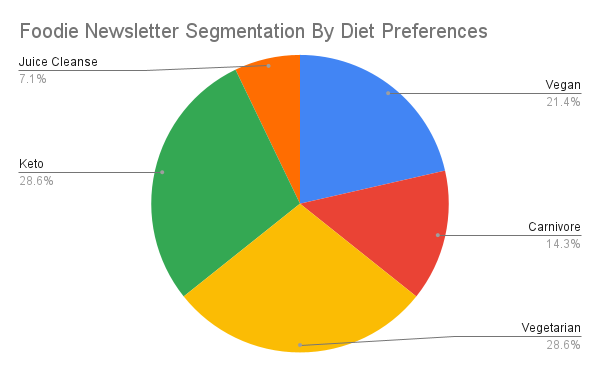
When faced with a generic offer or a personalized message attuned to their specific interests, it’s clear which one your customer is more likely to engage with. Personalizing your subject lines boosts open rates by 50%.
Segmentation allows you to send tailored offers, product recommendations, and more, giving your customers exactly what they want. The result? Happier customers, fewer unsubscribes, and increased open rates.
At the end of the day, email segmentation provides a win-win situation. Your customers enjoy more relevant content, and you enjoy the fruits of a successful, targeted email marketing strategy.
Here are some email segmentation strategies:
- Segment by Demographics. This involves categorizing your email list based on personal attributes such as age, gender, and income. It’s effective for tailoring content to suit specific life stages or financial capabilities. For instance, luxury product marketing would be more successful among higher-income demographics.
- Segment by Signup Source. Understanding where your subscribers came from—whether it’s from social media, your blog, or a webinar—helps you provide relevant content. If they signed up through a specific product page, emails about that product would likely be of interest. By adding UTM parameters to your links you can easily track where subscribers are acquired to automate the segmentation process.
- Segment by Engagement. Monitoring how subscribers interact with your emails—open rates, click-throughs, and response times—can help tailor future content. Engaged subscribers may appreciate more frequent emails, while less engaged ones might prefer less frequent, more targeted content.
- Segment by Purchase History. Segmenting based on past purchases allows for personalized recommendations. If a customer has previously bought a particular item, they might be interested in related products or services. This can also be used for replenishment reminders or upselling and cross-selling opportunities.
- Segment by Cart Abandonment. These are customers who’ve added items to their online shopping cart but didn’t complete the purchase. Tailored reminders or incentives can be a powerful tool to encourage them to finalize their purchase.
Key Considerations For Building A High-Quality Email List
Building a high-quality email list involves more than just gathering as many email addresses as you can. Here are some key considerations to keep in mind:
Consent is Crucial. Ensure that every person on your list has willingly given you their email address. Using shady tactics to get email addresses or buying lists can damage your brand reputation and violate email marketing laws.
Provide Value. Subscribers should receive consistent, high-value content from you. If they find your emails helpful or entertaining, they’re more likely to stay subscribed, engage with your emails, and convert into paying customers.
Use Segmentation. Not all subscribers are the same. Segment your list based on subscriber data (like location, past purchases, or behavior on your website) to create more personalized and relevant emails.
Keep Your List Clean. Regularly clean your email list to remove inactive subscribers, incorrect email addresses, or those who’ve chosen to unsubscribe. This helps improve your email deliverability and engagement rates.
Make It Easy to Subscribe (and Unsubscribe). Your email sign-up form should be easy to find and fill out. Similarly, make it easy for subscribers to opt out. It’s better to have a smaller list of engaged subscribers than a larger list of uninterested ones.
Be Transparent. Let subscribers know what they can expect when they sign up. How often will you email them? What kind of content will you send? This transparency can increase trust and reduce unsubscribe rates.
Test and Optimize. Continually test different elements of your email campaigns and sign-up forms to see what works best. This could be the placement of your sign-up form, the wording of your call to action, or the type of content you send.
Final Thoughts
Building a high-quality email list is an integral part of any successful digital marketing strategy. It’s not just about the numbers; the focus should be on cultivating a community of engaged subscribers who find value in your content and are more likely to convert into loyal customers.
The quality of your email list begins with a profound understanding of your target audience and a commitment to showering them with content so invaluable, they’d consider it a crime not to subscribe. Offering incentives, making your sign-up forms easily accessible, leveraging social media, and utilizing email automation can all contribute to the growth of your list. However, it’s equally important to keep your list clean and segment it for better personalization and engagement.
And, as with any marketing strategy, testing and optimization should be a continuous process. The more you learn about what works for your audience, the more effective your email marketing efforts will be.
Today, where algorithms shift like quicksand beneath your feet, having a direct line to your audience through an email list is like owning a treasure map. Consider it an investment.
About the author
Julian Lankstead is the founder of JulianLankstead.com. He helps businesses increase revenue by providing strategies to improve business process efficiency.
Don’t forget to share this article
Related articles
Nothing found.
